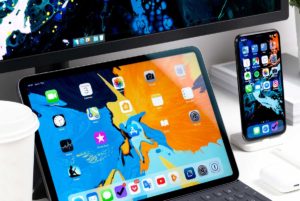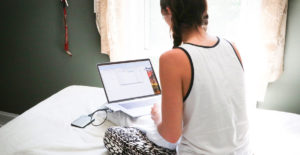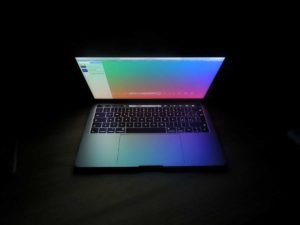Without doubt, technology makes our working lives easier, giving us convenience and greater flexibility. But the digital world is difficult to escape, which makes tech overload a very real risk.
‘Always on’ is not healthy
Research is starting to show a correlation between extensive use of technology and a decline in well-being. The line between our working and personal lives is increasingly blurred. While some employers might think enabling staff to access email and other work-related tech away from the office will boost productivity, digital tech can also distract employees from their work. Not only that, we know being ‘always on’ is not healthy. Employees can become stressed, and lack focus, engagement and energy.
What is a Digital detox?
To bring your best self to work, you also need to bring your healthiest self to work. A break from the digital world could be the refresher employees need. This is why many forward-thinking employers are encouraging staff to limit their use of their digital devices and undergo a ‘Digital Detox’.
A Digital Detox simply means disconnecting from digital devices for a certain period. Such devices include computers, laptops, tablets, smartphones and even boardroom presentation screens. But what can you do to introduce a Digital Detox for your staff… and for yourself? Here are 7 easy-to-implement initiatives.
Introduce a Tech-Free window
Introduce an hour-long window on a weekly or even daily basis where the whole company turns off non-essential technology. This means employees can fully focus on other key tasks without having to digitally communicate with others or check their email or phones. Not only can this improve productivity by removing digital distractions, it can also stimulate face-to-face communication between employees.
Hold No-Tech meetings
Instead of staff heading into meetings with their laptops, tablets and smartphones and with presentations on screen, choose a few meetings that are strictly tech-free. This can be especially beneficial when having brainstorming meetings, with creative ideas more likely to flow without the distraction of brightly lit screens and text message alerts.
You can take this one step further by taking a break from the office and hold a meeting outdoors or even a walking meeting. This can boost time spent talking face-to-face and lift verbal communication.
Remove out-of-hours access to email
In 2012, Volkswagen took what seemed a dramatic step at the time – it banned employee access to email outside of work hours. It took this action because employees were complaining that work was infringing on their personal lives. Since then, many companies have followed suit as a way of improving employees’ work-life balance and boosting personal productivity.
The French government took this even further. Now all companies with 50 or more employees must give workers the right to disconnect technology when they leave the office for the night.
This might not be popular, but…
Did you know a whopping 81% of New Zealanders have a smartphone (which is significantly higher than the global average of 71%). Measured with a special app, research showed the average American checks their smart phone a staggering 200 times a day. That’s more than once every 6.5 minutes. It’s not too hard to imagine that Kiwis’ mobile usage would be much different. Not surprisingly, such behaviour has a big impact on productivity – which is why some companies have opted to ban personal mobile phone use during work hours.
Encourage staff to take regular breaks
Researchers have found the most productive employees work in a concentrated, constructive burst for 52 minutes, then take a break for 17 minutes. This pattern of working is more productive if the 17-minute breaks are spent away from digital devices. Talking to co-workers, making a coffee or taking a walk lets employees rest their eyes and refresh their minds and bodies ready for the next 52-minute burst.
Organise workplace activities
The lunchbreak is an obvious time that employees will interact with personal email, smart phones, online news or social media. But having spent the morning glued to some form of technology, taking a break from tech makes sense. It gives the eyes and mind a rest.
Organising lunchtime activities such as yoga, a running group, a class at the gym or even a group lunch can help boost well-being and productivity.
Introduce a ‘leave it at the office’ policy
Employees should be free to relax, wind down and spend time with family when they get home. Pick a day or two each week where staff must leave work laptops and work mobile phones in the office so they can’t be interrupted.
Embracing the benefits of a Digital Detox
There is increasing evidence to show that businesses that encourage employees to take a Digital Detox are realising the benefits. Limiting digital distractions in the office and banning after hours email can allow employees to destress and sleep better. This helps employees return to the office the next day refreshed and focused, which can boost their productivity. So which of the 7 detox initiatives will you try first?
SPECIAL FEATURE:
Blue Light, Melatonin and Your Sleep Quality
In 1981, the Harvard Medical School showed that daylight keeps our internal clocks aligned with the environment. However, at night, artificial light throws the body’s biological clock – the circadian rhythm – out of whack. This means sleep suffers. Worse, research shows that this may contribute to the causation of obesity, diabetes, heart disease and even cancer.
Not all colours of light have the same effect. Blue wavelengths – which are beneficial during daylight hours because they boost attention, reaction times and mood – seem to be the most disruptive at night. In our modern world, the electronic screens on our digital devices are increasing our exposure to blue wavelengths – especially after sundown.
Circadian rhythms and Melatonin
Everyone has slightly different circadian rhythms, but the average length is 24 and one-quarter hours. The circadian rhythm of people who stay up late is slightly longer, while the rhythms of early birds fall short of 24 hours.
But here’s the thing: research from Harvard and the University of Toronto has found that blue light suppresses the secretion of melatonin, a hormone that influences our circadian rhythms. This can make it hard to both fall asleep and get the full benefits of a quality night’s sleep once you nod off. Not surprisingly, this can wreak havoc on your working day – and your health.
How to protect yourself from blue light at night
-
- Expose yourself to lots of bright light during the day. This will boost your ability to sleep at night, as well as lift your mood and alertness during daylight hours.
- Avoid looking at bright screens at least two to three hours before bed.
- Take that television out of your bedroom.
- Use dim red lights for night lights. Red light has the least power to shift circadian rhythm and suppress melatonin.
- If you work a night shift or use a lot of electronic devices at night, consider wearing blue-blocking glasses or installing an app that filters the blue/green wavelength at night.





